We all enjoy floating around in a beautiful pool and here in the Canaries we have many to choose from, including naturally - occurring pools, known locally as Los Charcos.
An article by Luisa Follano with The Voice Fuerteventura

All of the Canary Islands are different from each other. Some are stark and barren whilst others are lush and green. But there is one thing that they all have in common and that is rugged areas of coastline. And it is these Atlantic battered coastlines which have created some of the most interesting and stunning natural bathing sites in the world.
Bathing in salt water is good for you. It has loads of health benefits and the reason why people have been rushing to the beaches to bath in warm waters for centuries. But when it comes to water found in natural pools and volcanic rock caverns, these benefits can be multiplied.
In some places, volcanic therms wind their way through the rocks, warming the waters and helping your muscles to relax. In others, concentrated amounts of naturally occurring minerals do wonders for your skin and respiratory system. There are many of these natural health spas scattered across the islands.
Here are a few of the most popular Charcos that you will find in The Canary Islands:
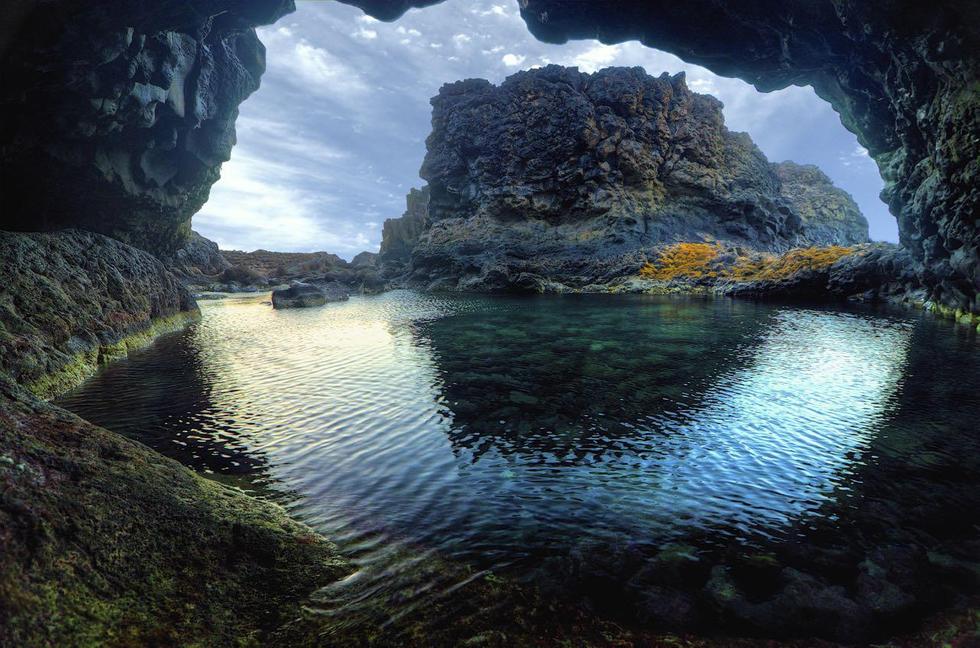
Charco Azul - El Hierro
The stunning natural pool shown above can be found in La Frontera on the island of El Hierro. Charco Azul means blue pool and it is easy to see how this stunning formation got its name. It was created by flowing lava and is cut off from the ocean, by a huge rock. When the tide comes in, powerful waves smash against the large rocks and send white, foamy spray crashing up the sides and into the pool.
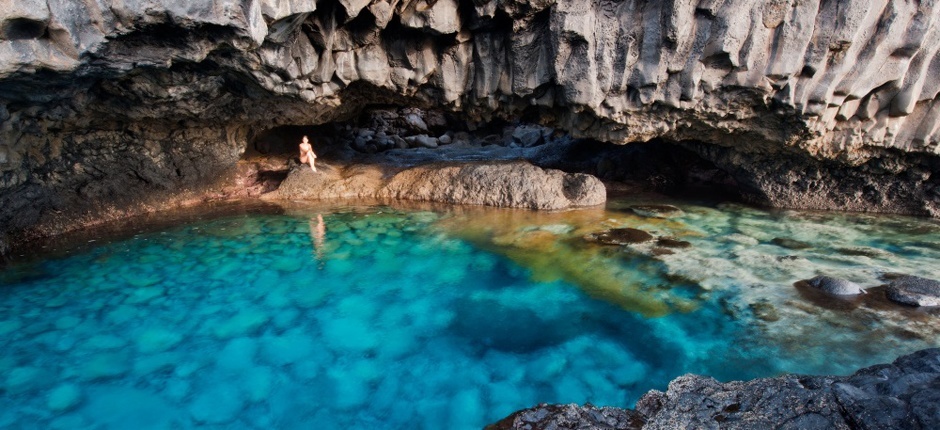
Charco Del Conde - La Gomera
This natural pool can be found on the lush, green island of La Gomera. It’s name means ‘The Earl’s Pond’ named after the lord of the island, following the 15th Century conquests. It is located in Valle Gran Rey and is a favourite place for families as during high tide, the natural pool fills up to create a lake which is great for swimming. However, it is always at its busiest once the tide has gone out, as what is left behind is a fabulous natural kiddie pool, which is protected from the open seas and a great place for the younger members of the family to splash about.
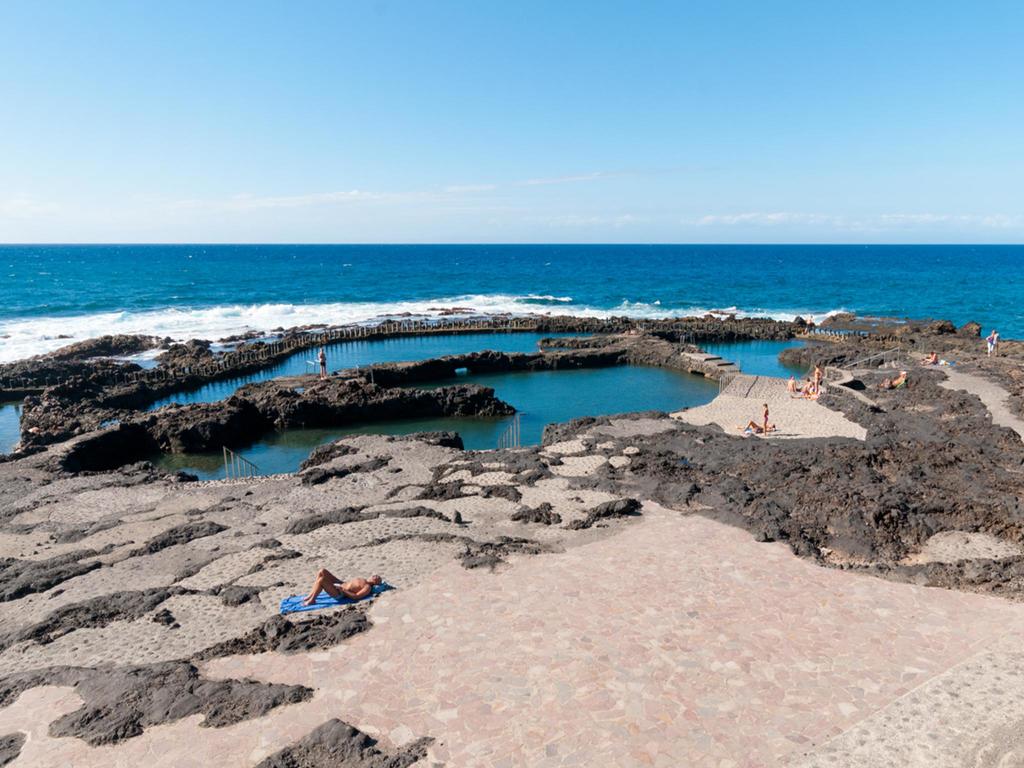
Las Salinas de Agaete - Gran Canaria
This rugged, natural complex is made up of three different pools and can be found in the North west part of Gran Canaria. Each pool is linked to the next by a network of volcanic tubes and It’s battlement-like protective columns keep the open sea out, leaving behind a calm and relaxing space in which to swim. This is just one of the natural pools that you will find on Gran Canaria. There is even one which, from the air, looks like a person has been carved into the rocks by the gods.
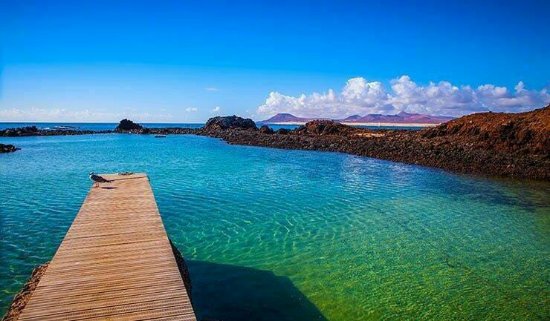
Puertito de Lobos - Fuerteventura
The islet of Los Lobos lies just off the coast of Corralejo in the north of Fuerteventura. The natural pool is called Puertito de Lobos as it was once home to a colony of Monk Seals or sea lions (sea wolves). Now, it is an officially protected nature reserve and the amount of daily visitors is restricted but as long as you have a ticket, you can visit the ‘little port’ by boat and once you are there you can swim and snorkel in the crystal clear waters.
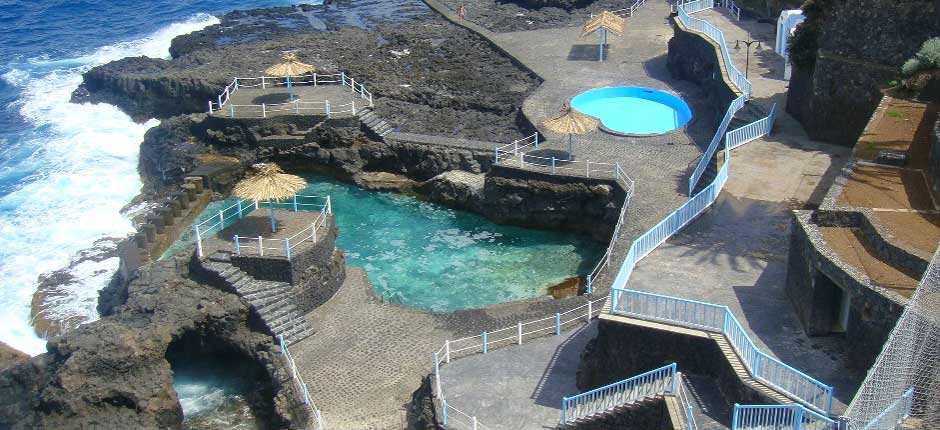
Aguas Verdes - Fuerteventura
The second set of natural pools are much harder to get to and are only accessible via a dirt path. They are located on the very rugged west coast; an area which experiences rougher seas and strong currents, located near to the old capital of Betancuria. There are numerous natural pools which follow the coastline and cover a six kilometre area. They are a favourite for those who like to get off the beaten track and also home to many species of large crab who live among the craggy rocks.
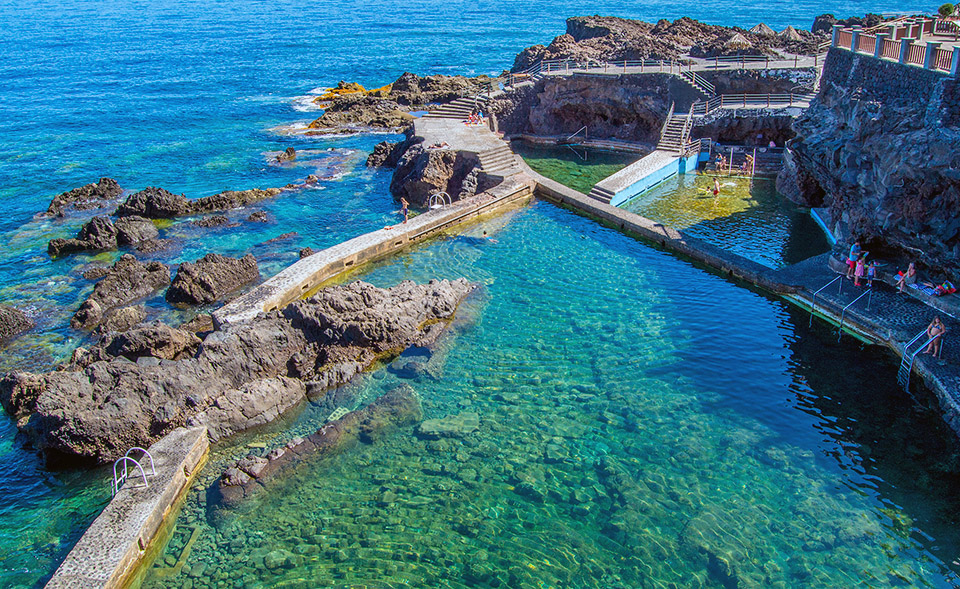
La Fajana & Charco Azul
There are three natural pools located in Barlovento, in the north-eastern part of La Palma which are a very popular place for families and sun worshippers, as the pools are protected from the waves and you can switch from one pool to the another easily. Another popular natural pool, also located in La Palma, is known as Charco Azul. It is such a favourIte with visitors, that a whole complex has been built around it, which includes everything from a children’s pool and waterfall to sunbathing terraces and changing rooms. It was also awarded an Ecoplaya ‘green beach’ award in 2013.
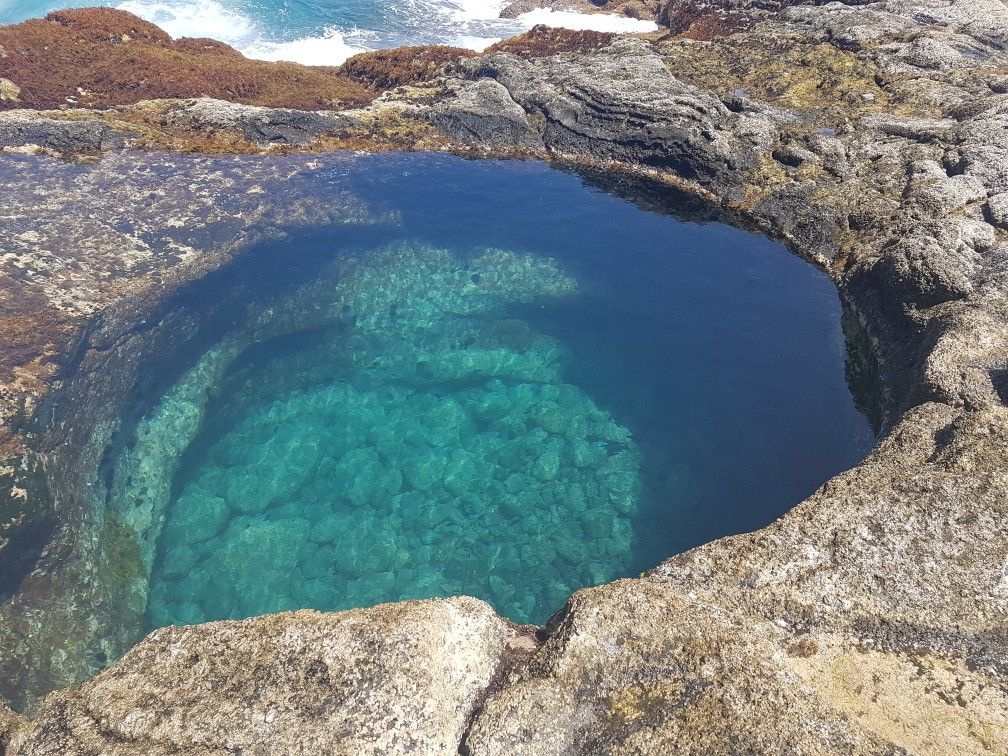
Punta Mujeres and Los Charcones - Lanzarote
Our neighbouring island of Lanzarote also has two areas which boast stunning natural pools. The first is known as Punta Mujeres, which is a two kilometre long stretch of coastline, dotted with natural pools, made from volcanic rock and overlooked by sleepy, fishing villages. The second can be found in the south of the island and is known as Los Charcones. This series of pools are accessed by a dirt track and cover an area of about two kilometres. The natural pools vary in both size and depth and are dotted all along the coastline, near the Pechiguera lighthouse and just outside Playa Blanca.
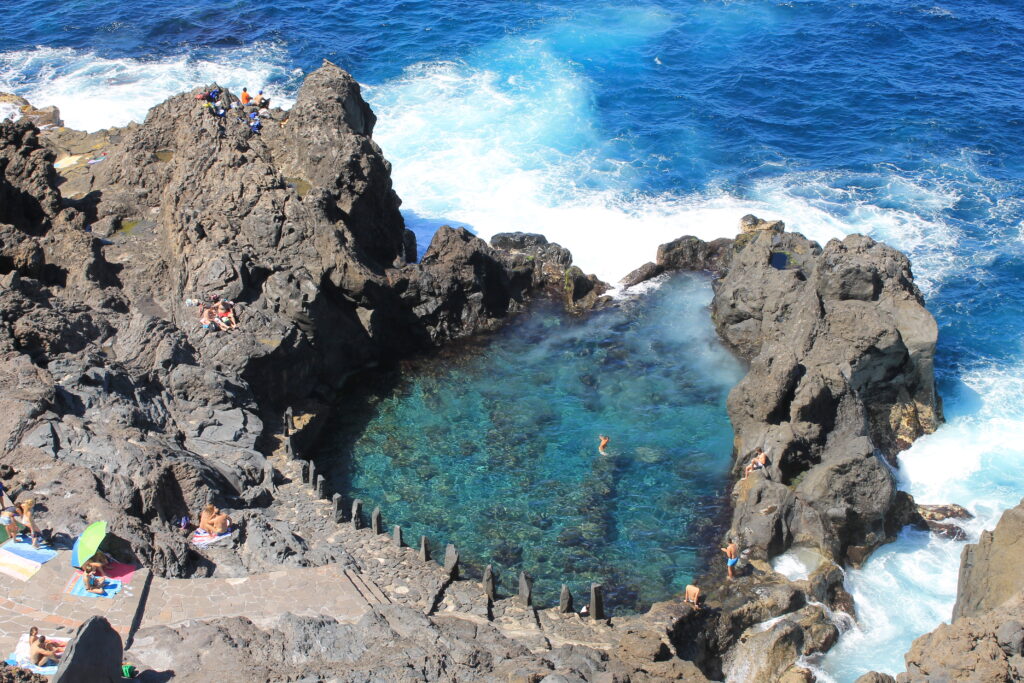
La Laja - Tenerife
In Tenerife, there are four areas which are home to natural pools and one of the most popular, can be found at the very north of the island. It is set among the volcanic rocks in a historic part of the island, a village called San Juan de la Rambla. If you walk through the main village street, you will eventually come to a long and windy staircase which leads downwards. At the bottom of the rocky staircase is La Laja rock pool. It is completely cut off and almost rises above the ocean. It is a magnificent example of a natural pool and just one of the hidden gems that the Canary Islands have to offer.
